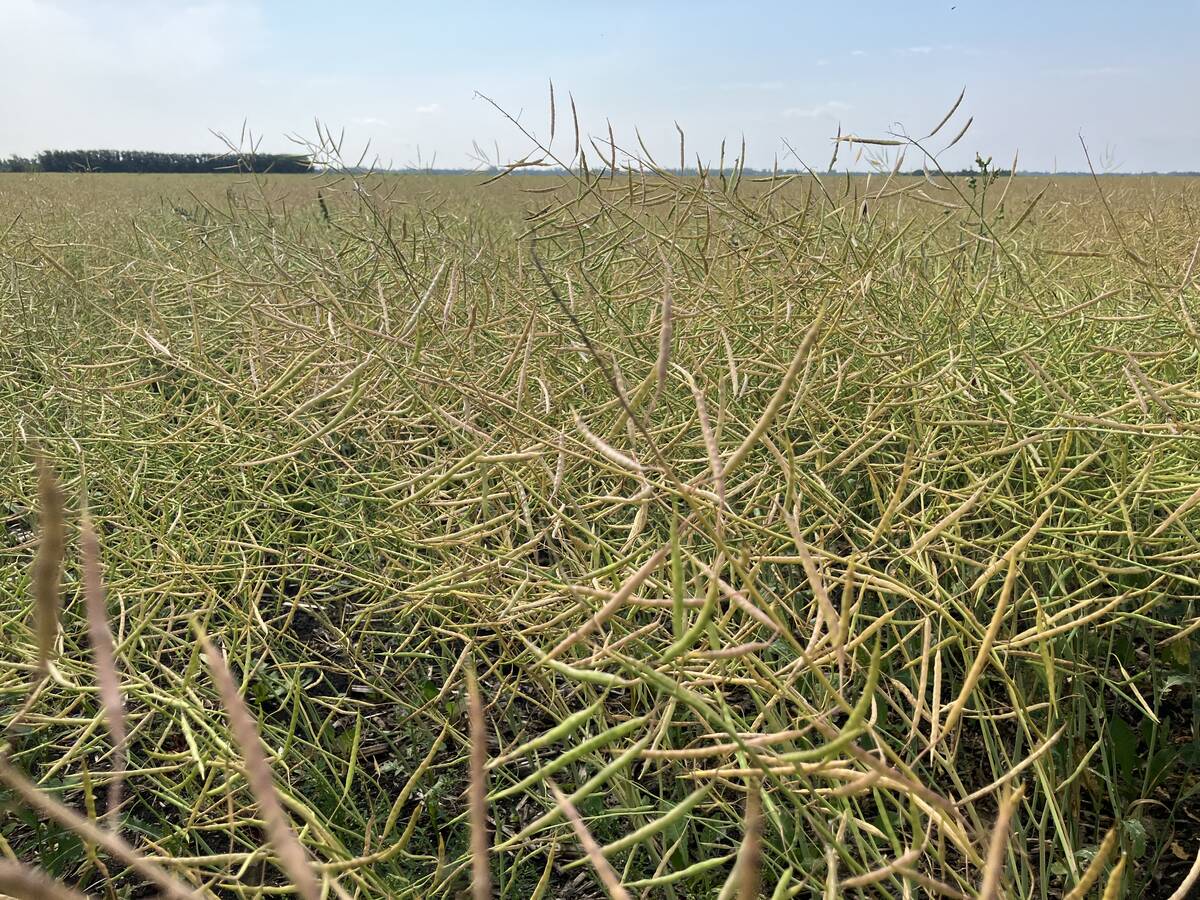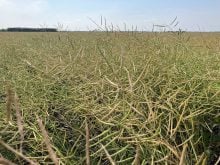Canola’s sharp rise due to short covering by speculative funds ran its course during the week of July 18 to 25, and the oilseed’s November contract plateaued around $670 per tonne. The November contract had a net gain of $22 on the week after two days of corrections.
Where will canola go in the remainder of July and into early August? The oilseed’s immediate future depends on how much rain falls on the Prairies. Just as Canada’s Drought Monitor suggested the drought across much of the region was pretty much finished, the rain dried up and a heatwave set in.
When blooming, canola can’t take much heat. There was a fair amount of canola still blooming across the Prairies, especially in Alberta and Saskatchewan. That heat blast will undoubtedly put a dent in forthcoming yields, but by how much?
Read Also

Canola trade watchful during harvest intermission
The flow of speculative money, reacting to whatever world news is available, can be expected to steer grain and oilseed futures in this stretch between Northern and Southern Hemisphere harvests, Phil Franz-Warkentin writes.
Canola that was podding took the heat a bit better, and that still could generate a harvest of around 20 million tonnes. However, there have yet to be a series of solidly based yield estimates to give the market a decent idea of what’s going on.
There’s little doubt that once November canola hit the $670/tonne mark, it wasn’t going to go much higher — not with weakness in Chicago soyoil. The Chicago soy complex has taken over as the main guide to canola, after Prairie weather conditions and fund short covering gave way.
It’s quite likely that canola will stick to its range, with $670 at its high end and $600 at its low end. Prices might bust through resistance/support but might not go much past those levels.
A harvest that bests Agriculture and Agri-Food Canada’s latest estimate of 18.63 million tonnes could pressure prices downward. Should there be a greater than expected impact on yields, a smaller crop could make things tighter and spur price increases.
But there’s a catch: Canada’s canola exports haven’t been as robust as expected in 2023/24. With a week left in the current marketing year, exports reached 6.82 million tonnes. While close to initial forecasts of seven million tonnes, exports are 1.19 million tonnes short of what was shipped in 2022/23.
Then there is a wildcard; a possible labour dispute that could cripple Canada’s rail transport just as the Prairie harvest gets underway. Come Aug. 9, the Canadian Industrial Relations Board will issue its ruling on which rail activities need to continue in the event of a strike or lockout. At that time, Teamsters Canada Rail Conference could give its 72-hour strike notice to Canadian Pacific Kansas City and to Canadian National.















